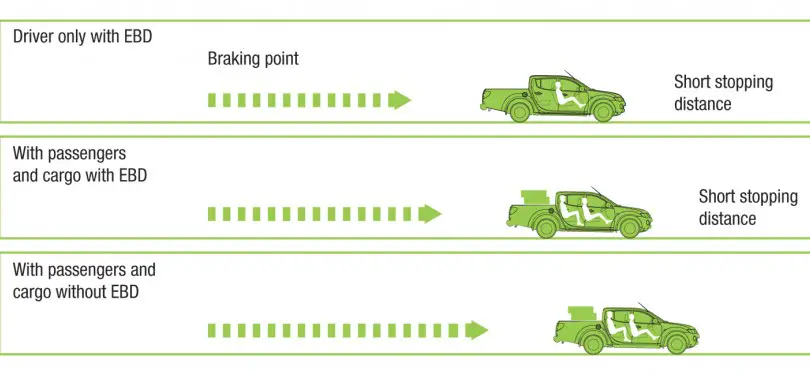How Electronic Brakeforce Distribution (EBD) works?
EBD stands for the Electronic Brakeforce Distribution system. This system is a part of a vehicle’s braking system. The EBD always works in unison with the Anti-lock Braking System or ABS. The Electronic Brakeforce Distribution works on the basic principle, which states that the ‘braking force required by every wheel of a vehicle is different.’
So, depending upon the vehicle speed, driving conditions, and load/weight in the vehicle, the EBD calculates the extent of suitable braking force for each wheel. The brake master-cylinder then reduces the brake fluid pressure to the front wheels and increases the rear wheels’ pressure until the brakeforce is evenly distributed. Thus, the system applies an equal brakeforce to all the wheels. As a result, the driver can bring the vehicle to a dead stop within a short distance with better control. Additionally, this system is very helpful while applying the brakes on turns and bends.
Components of Electronic Brakeforce Distribution system:
The hardware of EBD comprises the following components which are:
- Wheel Speed sensors
- Load sensor
- Brake force modulators / Valves
- Electronic Control Unit (ECU)
In this mechanism, each wheel has a separate sensor mounted on it for the precise calculation of its speed. Additionally, a load sensor measures the weight distribution between the front and the rear wheels of the vehicle. In the event of braking, based on the feedback received from the load sensor and the wheel speed sensors, the ECU calculates the braking force for each wheel separately. It then applies only that much force for that particular wheel. In addition, it can even reduce the excess brake force applied to other wheels. The actual application of hydraulic pressure, i.e., brake force, is carried out by the Brake Force modulators or the valves.

There is a difference between the Anti-lock Braking System or ABS and the EBD. In fact, the Electronic Brakeforce Distribution can actually sense the weight supported by each wheel at every moment. Hence, it can calculate the required braking force, which is not the case with the ABS. Nowadays, many car manufacturers like Toyota, Honda, and Mazda offer EBD as standard on their models.
